PAIRING POTS & SUCCULENTS
Join Claire Bandfield apotspot.com and me this Saturday, May 5, 2018. Get tips on selecting and planting zany, Dr. Seussian cactus and succulents from both a local grower and Xera Plants. Planted alone as single specimens and in artful combinations, succulents are low maintenance, easy on the water, and bold conversation starters. Bring your mom and make a Mother’s Day gift (10% off all pots for workshop participants).
WHERE: Hyland Garden Design, 1114 SE Clay St. (next to Xera Plants)
DATE: Saturday, May 5
TIME: 10:30-11:30am
FREE… REGISTER at bobhylandgardens@gmail.com
Stylish, Weatherproof Garden Pots
I sell an artful selection of outdoor and interior garden pottery and decor in my Portland shop Contained Exuberance. All pots are NOT created equal in craftsmanship and durability throughout the 4 seasons. The old adage “you get what you pay for” rings true. I strive to offer quality garden pottery at affordable pricing and I extend a 20% trade discount to landscape and garden professionals.
At my shop, you’ll find pots in contemporary forms, textures, and colors to suit your personal tastes and style. If you don’t see it in on the floor, you can browse catalogs and place custom orders with several companies that I represent. Here are some POT STYLES that I am particularly excited about this season.
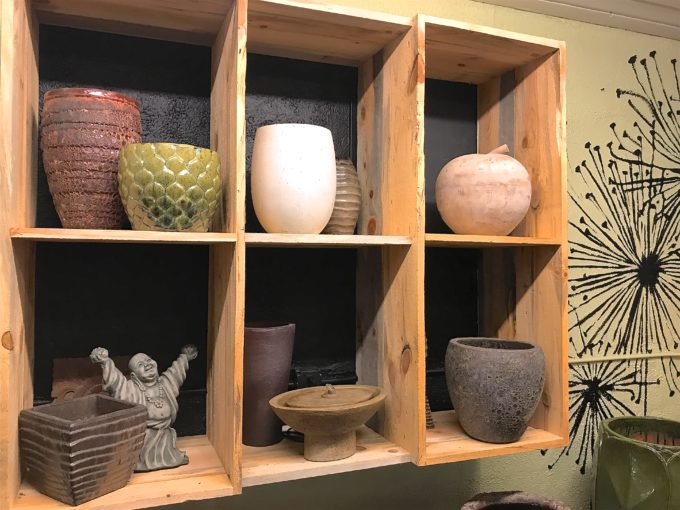
CAST STONE from Campania International, a U.S. company that has designed and manufactured cast stone pottery at its facility in Pennsburg, PA, since 1983.
What’s new? Realistic cast stone barnboard troughs and planters. Guaranteed not to rot!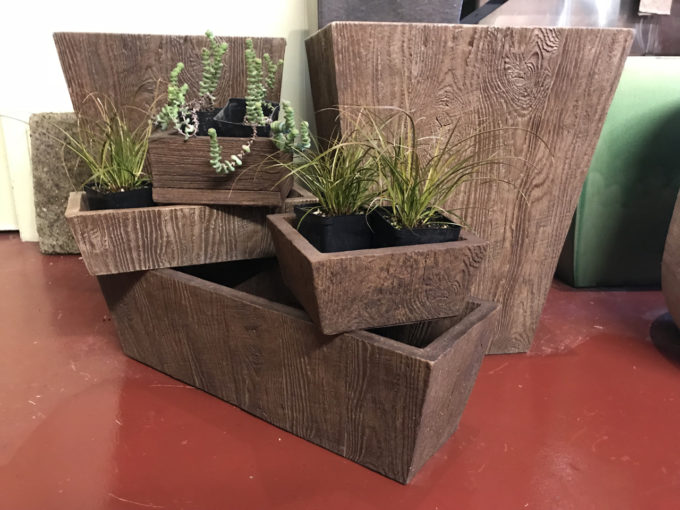
GLAZED EARTHENWARE imported through Campania International’s Pacifica program. Manufactured in Vietnam and China.
What’s new? Art pottery and Angkor collections of glazed, sanded pots from Vietnam in a variety of color plays.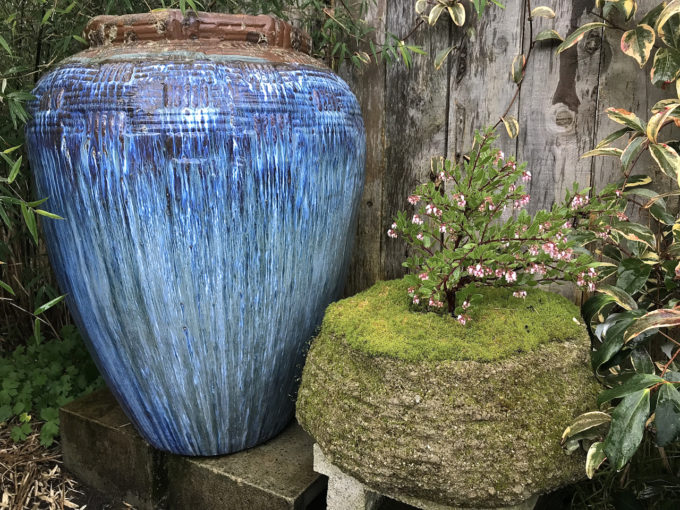
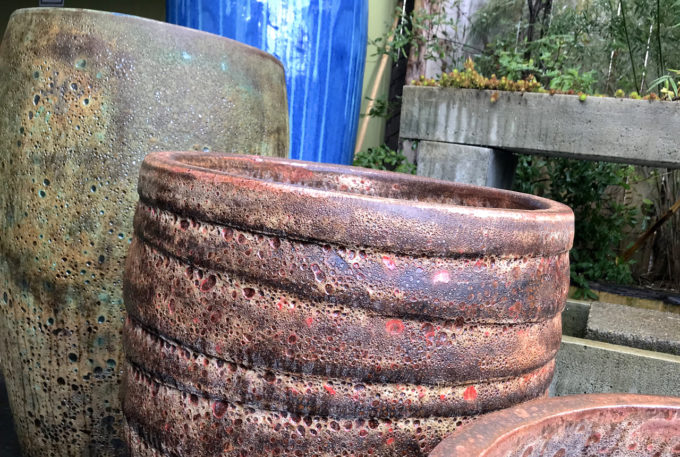
LIGHTWEIGHT polyresins, fiber cement, recycled plastics, and hypertufa.
What’s new? Playa Blanca fiber cement pots in beautiful shapes AND hand cast stone pots (aka “hypertufa”) beautifully crafted by Camas, WA-based potter Claire Bandfield of apotspot.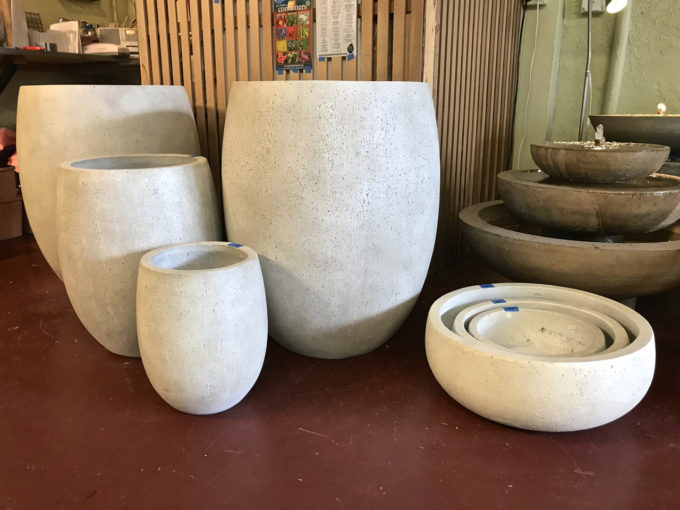
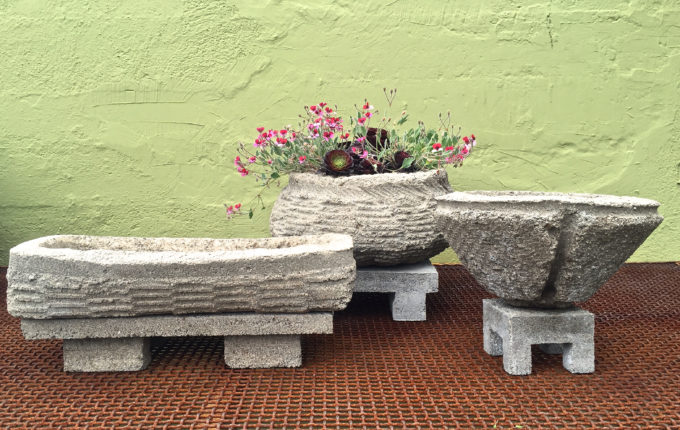
TERRA COTTA. Campania’s line of Antico terra cotta in contemporary forms and surface textures.
What’s new? Handspun linen pots, tela bowls, and antique lattice baskets.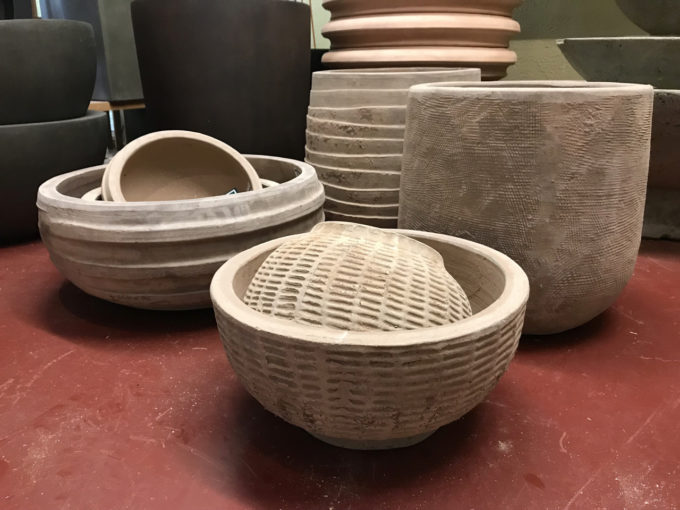
Spring Yellows
My pottery and garden decor shop Contained Exuberance reopens for the season on Thursday, March 1st.
It has been a relatively benign, warm winter up until this past week. The Portland Metro region has experienced colder nights in the 20s and up to 7 inches of snow depending on where you live.
Mild January weather triggered an early bloom season, by my record-keeping 2-3 weeks ahead of normal time in our garden for shrubs like witch-hazel, paperbush, and daphne. Hamamelis x intermedia ‘Arnold Promise’ started blooming in mid-January with long-lasting, clear yellow flowers that perfume the air with delightful sweet fragrance.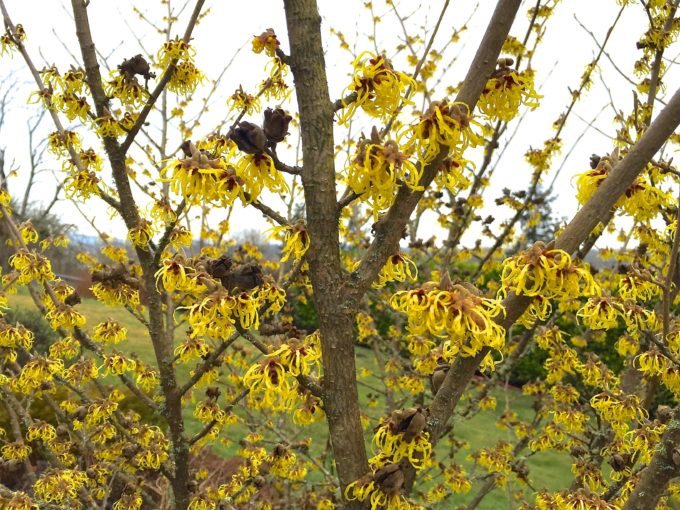
Hamamelis x intermedia ‘Diane’ sports copper-red flowers. It’s fragrance is more subtle than ‘Arnold Promise’, but the flowers are to die for.
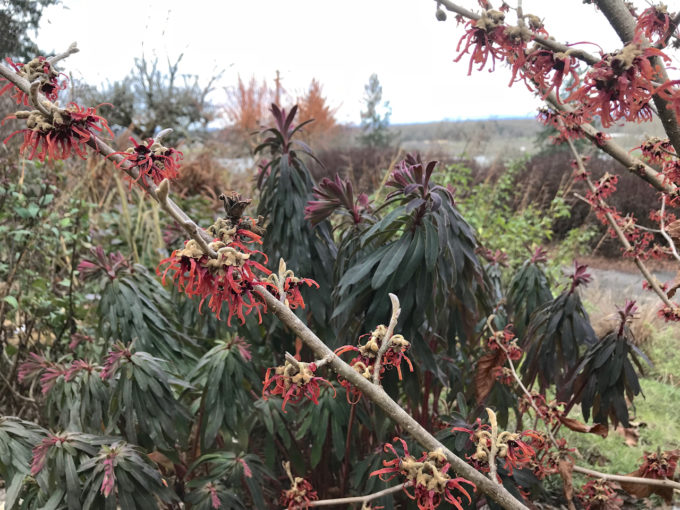
Another favorite variety that I use frequently in my garden designs is Hamamelis x intermedia ‘Jelena’. I love its coppery flowers that on closer inspection are red at the base melding with orange centers and yellow tips.
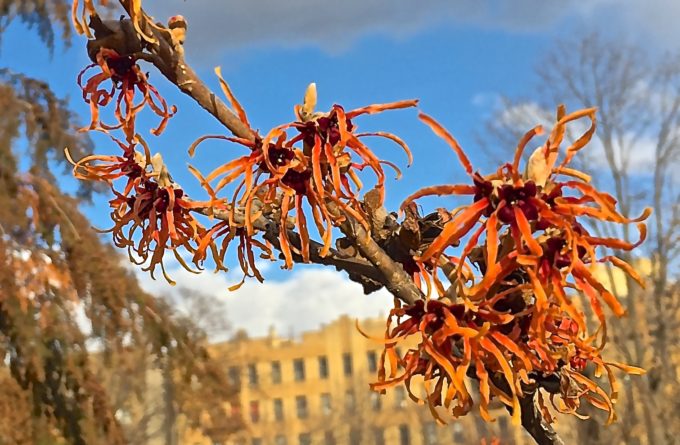
Another fragrant winter-blooming shrub that rides winter to the cusp of spring is winter honeysuckle, Lonicera fragrantissima. To my nose it offers the sweetest winter aroma. Unlike the witch-hazels which drop leaves in fall, winter honeysuckle is semi-evergreen through the winter months.
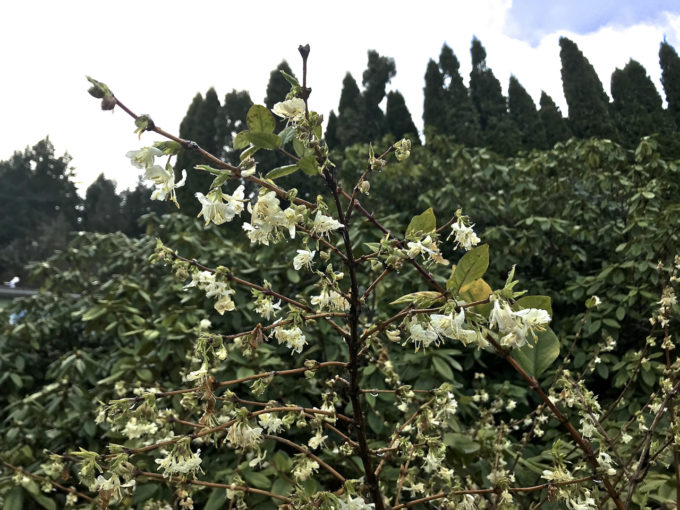
For deep, spicy pungent fragrance I’m forever a fan of wintersweet, Chimonanthus praecox. The waxy, almost translucent flowers open on bare stems in January and February. Once smelled, you will remember and lust for this shrub.
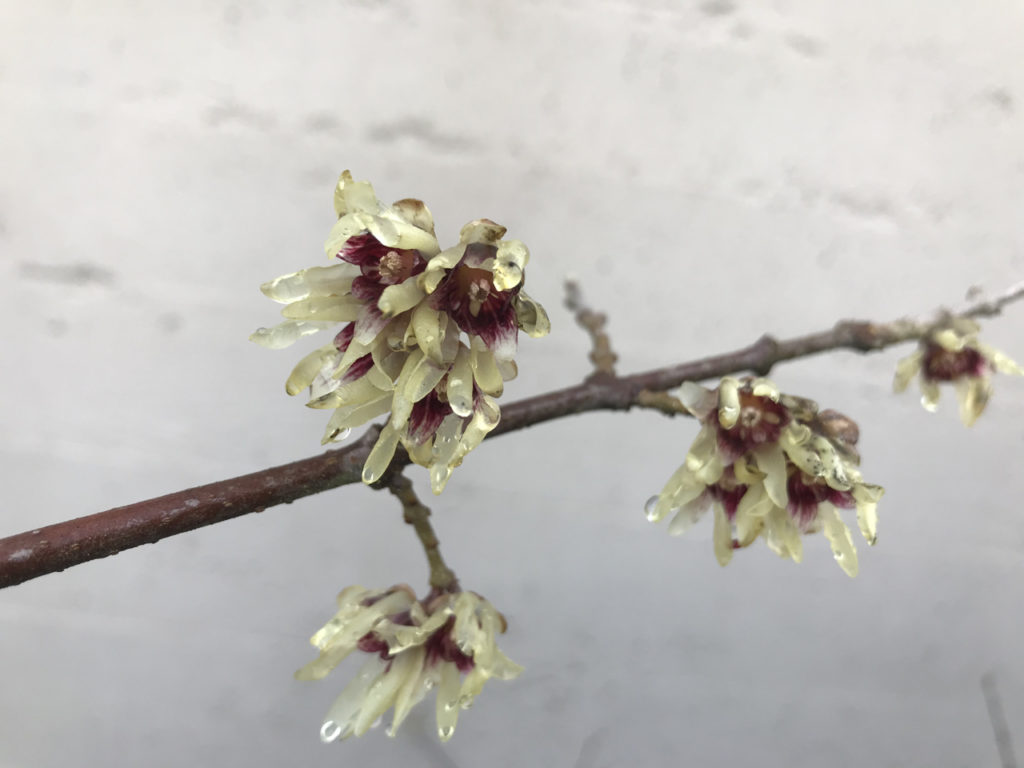
Just now Edgeworthia papyrifera (paperbush) is trying to steal the fragrance show in our garden (snow keeps getting in the way!). Sweet, softly hairy umbels of golden yellow flowers pop from buds that look like Hershey’s Kisses. The flower balls pack lots of fragrance that lure hummingbirds.
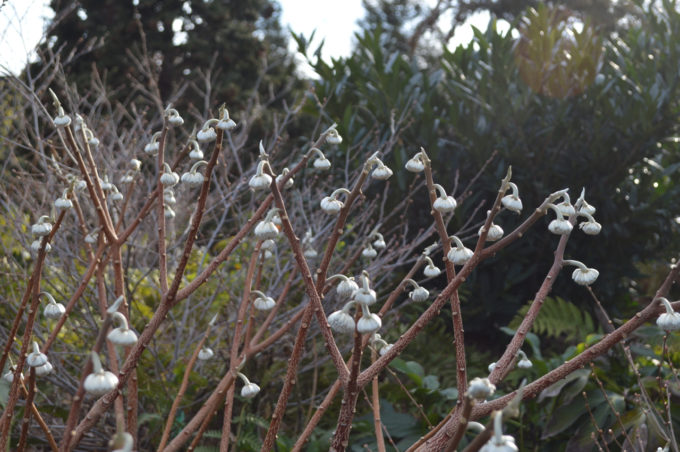
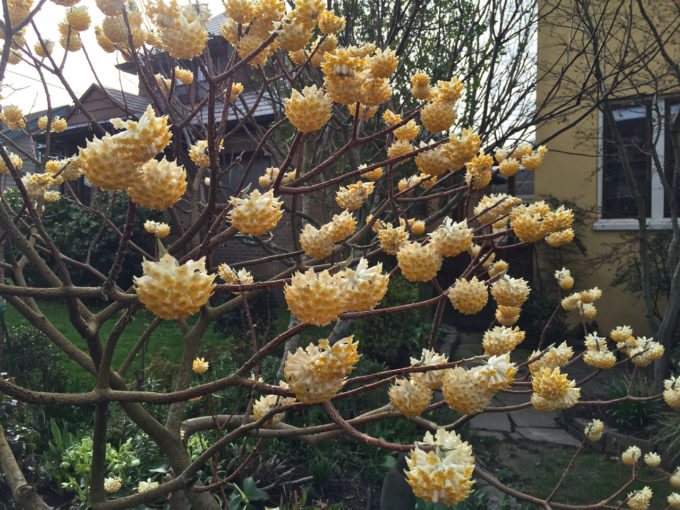
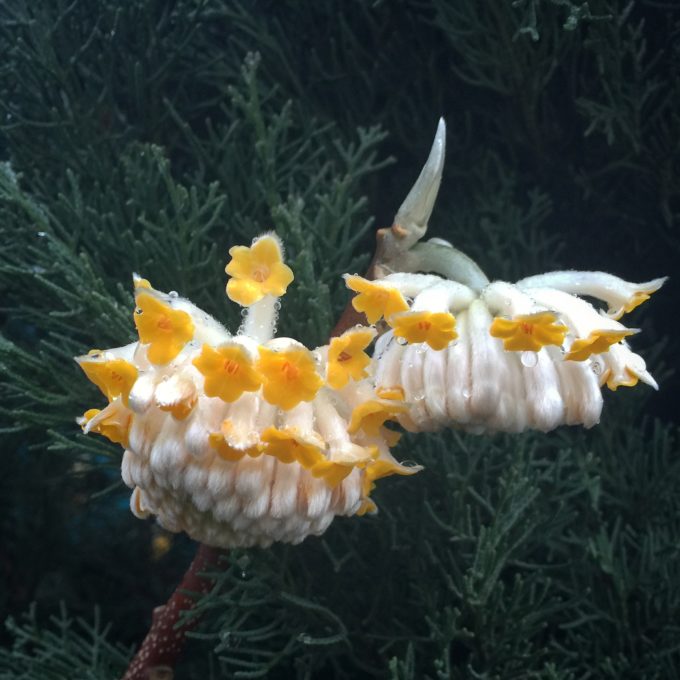
My Shop is Open for Spring!
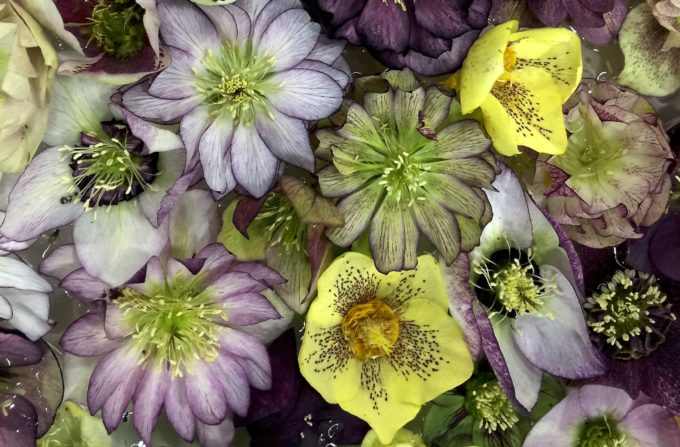
Spring is popping…time for a garden consult?
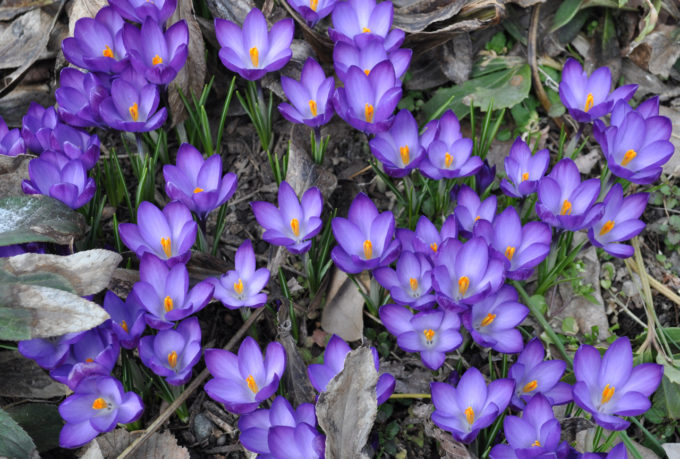
Crocus sieberi subsp. atticus ‘Firefly’
Design for Autumn Foliage
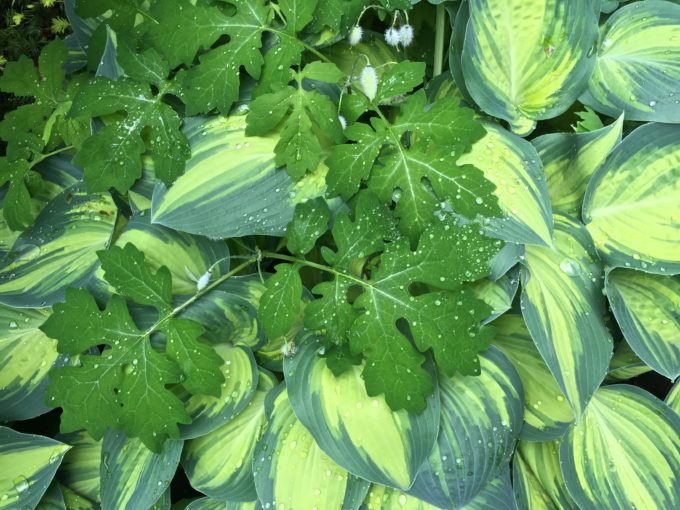
written for the Spring 2017 Quarterly of Hardy Plant Society of Oregon http://www.hardyplantsociety.org
There is nothing like the fresh emergent GREEN of springtime. Green is symbolic of new beginnings, vitality, and photosynthesis. We’re all chlorophyll addicts but tend to think of green as nature’s background color and often don’t regale its importance in garden design. Interestingly, Pantone (the arbiter of color in fashion and design) has chosen Greenery as its color of the year for 2017. As described, Greenery is a fresh and zesty yellow-green shade that evokes the first days of spring when plants revive, restore, and renew.
In April and May, gardens come alive with a vibrant parade of emerald-green lawns and vivid yellow-green mosses clinging to trees, rooftops, walls… even the driveway. One of my favorite springtime scenes is the contrasting color pattern across Forest Park hillsides behind our house as new yellow-green foliage of bigleaf maples (Acer macrophyllum) contrasts against swaths of evergreen Douglas firs, hemlocks, and cedars. I also delight in the patterned fresh leaves of our native wood sorrel (Oxalis oregana) and the annual unfurling of bright green western maidenhair fern fronds (Adiantum aleuticum). In my container plant business I often sheet moss containers with Irish moss (Sagina subulata) for quick-and-easy doses of dazzling spring green.
Conifers and broad-leafed evergreens that have been omnipresent background throughout winter take on new vibrancy as spring temperatures and soils warm. Douglas fir (Pseudotsuga menziesii), arborvitae (Thuja occidentalis), Japanese cedar (Cryptomeria japonica), rhododendron, Oregon grape (Mahonia aquifolium and hybrids), and cherry laurel (Prunus laurocerasus) intensify and lend customary, but renewed, green texture, structure, and form.
Green mixed with other colors gives us a range of hues – lime-green, olive-green, emerald-green, blue-green, and celadon often used to categorize plant colors. In my garden, we rely on Chamaecyparis pisifera ‘Boulevard’, Juniperus deppeana, Arctostphylos pajaroensis ‘Warren Roberts’, and Eucalyptus pauciflora var. debeuzevillei (ghost gum) to provide blue-green foliage accents. Sadly, our beautiful teenage ghost gum toppled in the heavy snow and ice of January and had to be removed. I often include Juniperus virginiana ‘Gray Owl’, Cupressus arizonica ‘Blue Ice’, Juniperus scopularum ‘Skyrocket’, and Ozothamnus rosmarinifolius for silvery gray-green color and textural contrast in my designs.
Bold lime- and yellow-green foliage brings a fresh, crisp vibe to the garden. Mexican orange cultivars (Choisya ternata ‘Sundance’ and ‘Gold Fingers’) can really heat up spring compositions. Choisya offers added value with fragrant white spring flowers evocative of the sweet, heady smell of blooming orange groves. Other deciduous shrubs like Ribes sanguineum ‘Brocklebankii’ and ‘Xera’s Lime Punch’, and Corylopsis spicata ‘Aurea’ (aka ‘Golden Spring’) offer limey and acid yellow-green hues, respectively, as miniature leaves unfurl, enlarge, and mature. Down closer to the ground, perennial bleeding heart (Dicentra spectabilis ‘Gold Heart’), Hosta ‘June’, and golden woodrush (Luzula sylvatica ‘Aurea’) offer similar spring color play.
Spring greens can be suffused and overlaid with red, burgundy, and bronze tones that fade out later in the growing season. New whorls of foliage on Mahonia and Pieris hybrids often sport this look. The leaves of Epimedium x rubrum are a mottled pattern of green and burgundy-merlot; and the fresh spring leaves of Rodgersia podophylla ‘Bronze Form’ offer a brazen metallic sheen.
Green is my favorite color, no doubt about it. While I am easily teased by a yellow spring rockrose (Halimiocistus) or Himalayan blue-poppy (Meconopsis), my mantra remains “foliage (in all its shades of green) rides the season; flowers are fleeting.”
20% End-of-Spring Pottery Sale, June 1-4
My Shop is overflowing with pots of all kinds. Dress up your garden, deck, or balcony for outdoor entertaining, barbecues, and summertime living.
SALE DATES: Thursday-Sunday, June 1-4; 10am-6pm
20% off everything in my garage showroom; discount not applied to special order items.
NOW IS THE TIME! Great prices on contemporary frost-proof pots and recirculating fountains. Styles include cast stone, glazed earthenware, and lightweight designs in fiber-cement, polyresin, and hypertufa.
518.929.0699
Email: bobhylandgardens@gmail.com
Jumpstart Summer…book a garden consultation now!
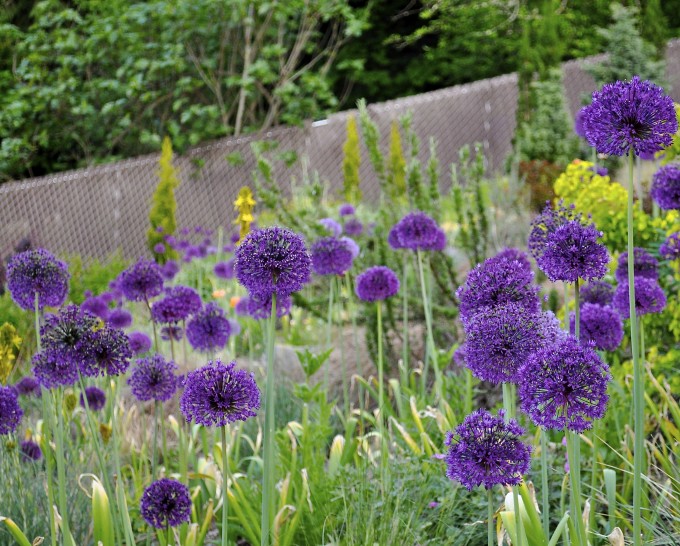
“Your garden should delight and excite you year-round. I design plant-driven gardens that offer bang for the buck through all seasons.”
After a tough winter, it’s time to plan for garden improvements or design new plantings.
My Shop is closed for regular retail until March 2nd…so I have greater availability to schedule garden consultations.
AT YOUR GARDEN OR BUSINESS
Introductory Consultation @$125… Includes site visit, planting recommendations, and preliminary plant list
Planting Design @$85/hour… Small spaces to large properties. Plant-driven, climate-adapted, easy-care gardens.
Container Design for Home and Business @$85/hour… Streetside, entryways, patios, balconies & terraces. I help you choose and purchase the best pots for your situation and design container plantings.
AT MY SHOP Contained Exuberance; 1114 SE Clay Street, Portland, OR 97214 (next to Xera Plants)
Pots, Fountains, Benches, Garden Ornament
Eclectic, contemporary, rustic & lightweight designs. Custom-ordering available.
518.929.0699 (voice/text)
Winter turns to Spring…Ribes sanguineum var. glutinosum
RED is commonly associated with heat, activity, passion, sexuality, anger, love and joy. It is the universal color for stop, pay attention…LOOK AT ME!
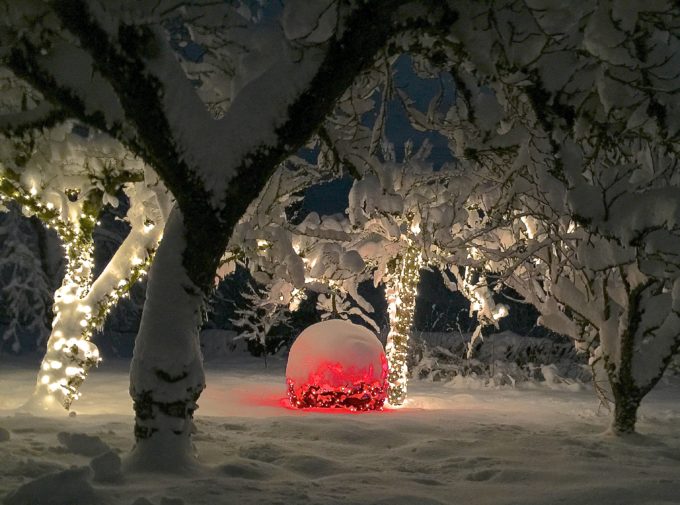
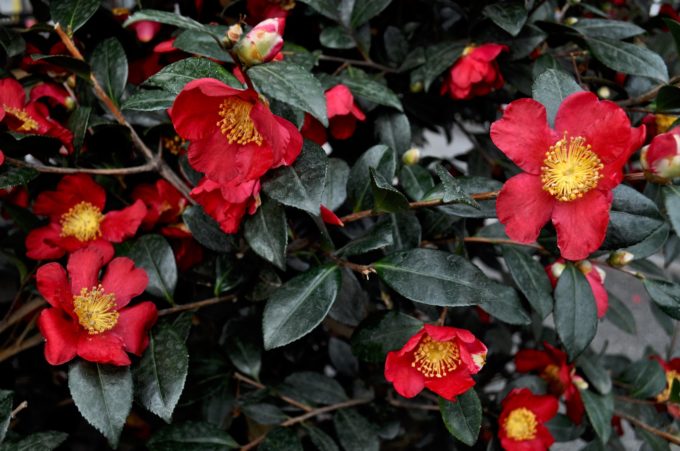
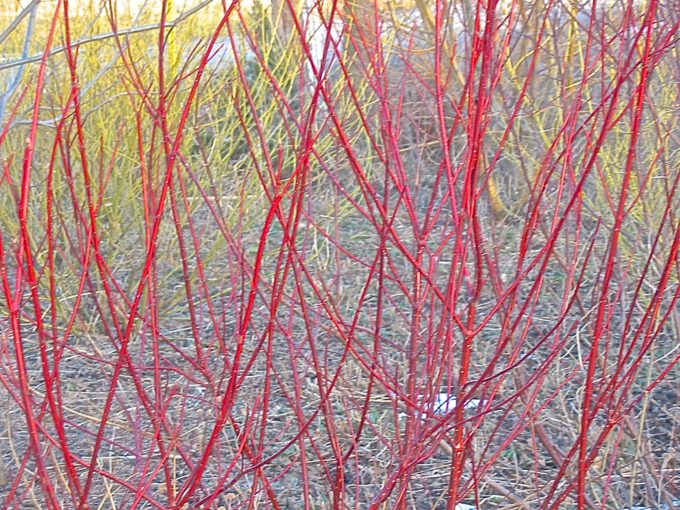
In planting design, red and its many hues can immediately focus attention on a particular element or view. With less color competition in the winter garden, chestnut bark, cardinal stems, garnet fruits, bronzy red foliage, and burgundy flowers really zing.
I am a big advocate of bold, red, coral, orange, and yellow winter stem color in my garden designs. I lived for a good chunk of time in the Mid-Atlantic and Northeast regions surrounded by a predominantly gray-brown, deciduous winter landscape for close to 5 months of the year. In Portland (thankfully!) winter is now a few months shorter, generally benign, and much more evergreen than back East.
A simplistic (but compelling!) winter planting that I left in the Hudson Valley consisted of copses of Betula nigra ‘Heritage’ (river birch) surrounded by thickets of Cornus sericea ‘Cardinal’, a vibrant red-twig dogwood with cardinal-red stems. I immediately understood the cultivar name after watching a male cardinal perched for hours on this dogwood’s twiggy silhouette in a snowy white landscape at our former nursery…it was the perfect color match between flora and fauna! Other spectacular winter red-twig dogwoods include Cornus sericea ‘Baileyii’ with bright red (carmine) winter stems (green foliage in season) and C. sericea ‘Hedgerow’s Gold’, with deep garnet branches covered in season with spectacular bright golden-yellow variegated foliage.
Acer palmatum ‘Sango Kaku (coral bark Japanese maple) is a small tree standout that tones up gardens in winter with its brilliant scarlet bark. After leaf drop, the bark and twigs take on a coral-red tinge that grows deeper as winter advances. Another is Acer rufinerve ‘Erythrocladum’ (in the snake bark maple group) that shines with winter bright coral-orangey red bark. And, of course, there is Acer griseum (paperbark maple) with its textured, peeling, papery sheets of chestnut bark that reveal cinnamon-brown underneath. In the same vein is Lagerstroemia indica x fauriei ‘Natchez’, which as it ages, shouts out in the winter landscape with a bark mosaic of cinnamon-brown.
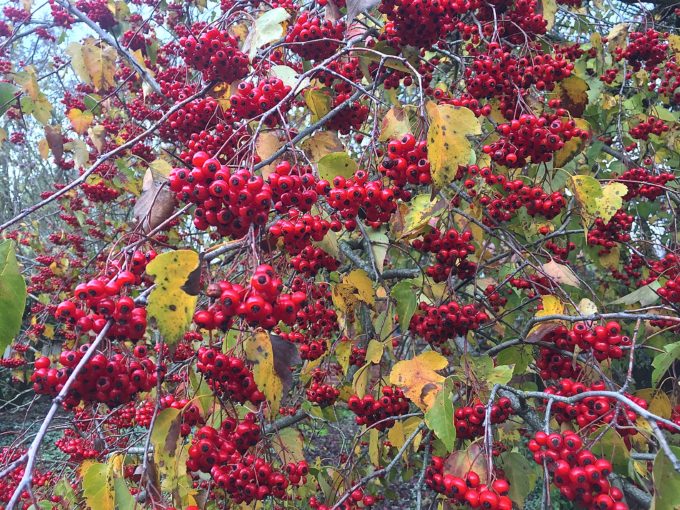
Winter fruits play heavily in my winter gardens. I favor trees and shrubs producing red fruits that don’t mush and ferment quickly in cold weather, persisting well into winter as a food source for resident birds (and a source of enjoyment for we humans). A good example is the crabapple, Malus x ‘Donald Wyman’, a small, but spreading tree that produces lots of bright red, persistent crabapples (to 3/8” diameter). A few other red-fruited crabapples with the same qualities are Malus sargentii and M. ‘Jewelberry’ (both better suited for small gardens) and M. ‘Sentinel’ a narrow, upright tree for tight spaces.
On Portland streets, Crataegus lavalleei (Lavalle hawthorn), Crataegus phaenopyrum (Washington hawthorn), and C. viridis ‘Winter King’ turn my head in December and January. All of these hawthorns produce abundant, showstopping clusters of red to orange-red fruits that ride well into winter. A bonus is their toughness and adaptability to our summer dry climate.
Evergreen English holly (Ilex aquifolium) produces the stereotypical holiday red berry in Pacific northwest gardens. While here to stay, natural resource managers and gardeners alike are concerned about this holly species spread in natural areas, parks, and national forests. In my own garden, I see the pervasive germination of seedlings from a female English holly that came with our northwest Portland house five years ago. But how I love this spiny evergreen laden with red, look-at-me fruit from November through March and the birds that slowly peck away at them.
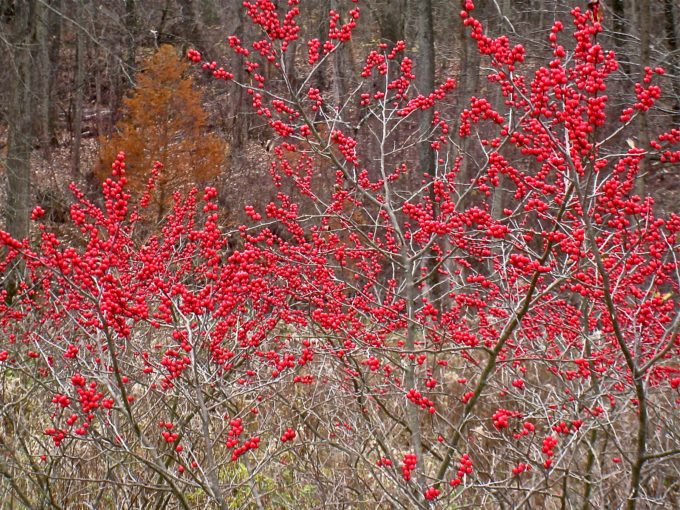
Truth be told, I much prefer deciduous hollies like Ilex verticillata ‘Winter Red’, ‘Red Sprite’, and ‘Sparkleberry’. Small white blooms mature into vivid red fruit after leaf drop in the fall. Deciduous hollies need a late-blooming male variety planted nearby in order to produce berries and they grow best in soils that retain moisture.
Viburnums are versatile, garden-worthy shrubs and consistently in my arsenal of winter red-fruits. In our garden Viburnum opulus ‘Exuberant’ displays bunches of red fruit around our front deck following the most glorious fall foliage display. Another favorite is Viburnum setigerum known as the tea viburnum because its leaves were used by Chinese monks to make a sweet medicinal tea. While I’m not steeping its leaves, I do delight in this viburnum’s fat clusters of bright red berries that often weigh down branches.
Let me not leave out another red knockout for winter gardens. Nandina domestica (heavenly bamboo) in its many forms provides lacy evergreen foliage turning brilliant shades of red in autumn, topped by clusters of red berries. My new favorite selection is Sienna Sunrise (‘Monfar’) with its intense fiery red new foliage and red highlights through winter.
Lower to the ground, I eagerly await hellebores that pull me from winter into spring. Among my favorites is Helleborus Winter Jewels ‘Cherry Blossom’ with its luscious large, semi-double blooms of rich pink with deep, cherry red centers. Towering above, dark red varieties of Camellia japonica, always remind of Alice in Wonderland and the Queen of Hearts. A sign of promise…just in time for Valentine’s Day!
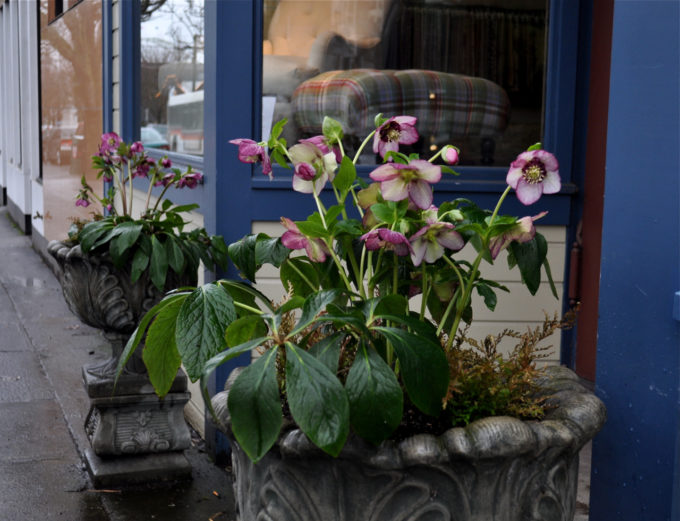
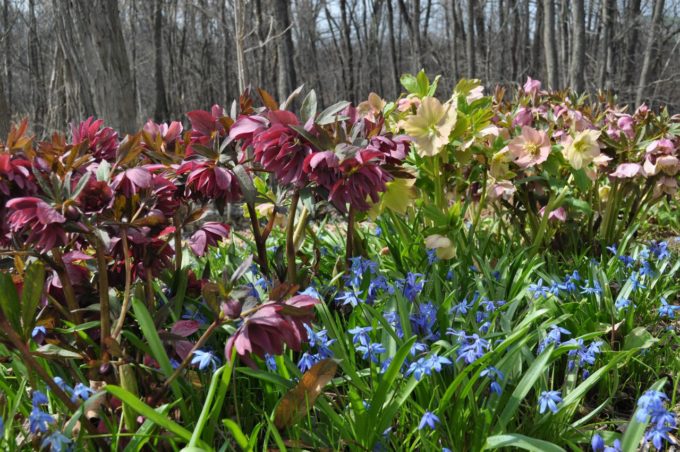
Orange Warms the Fall Garden
ORANGE epitomizes fall. Fields of ripe pumpkins ready for harvest; Japanese persimmons turning deeper orange as the weather cools; dahlias ruling the garden, like my new orange favorite ‘Maarn’ with four-inch, pure orange pompons. ORANGE is optimistic, uplifting, and rejuvenates our spirit, particularly after a long, dry northwest summer.
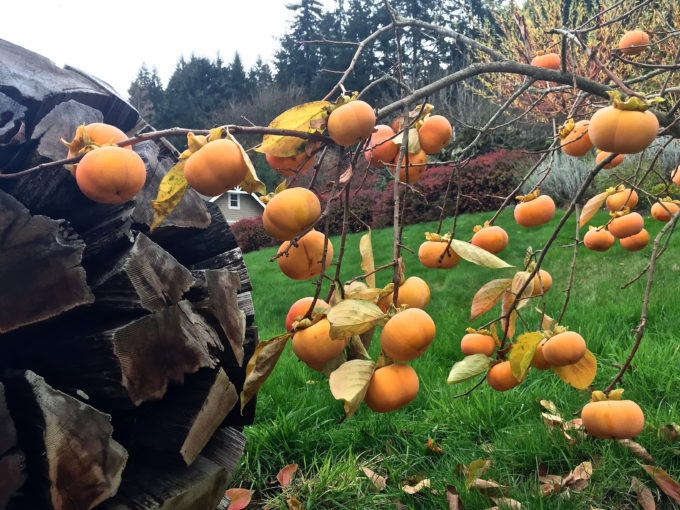
From a series of articles I’ve written on COLOR IN THE GARDEN for the Hardy Plant Society of Oregon Quarterly publication.
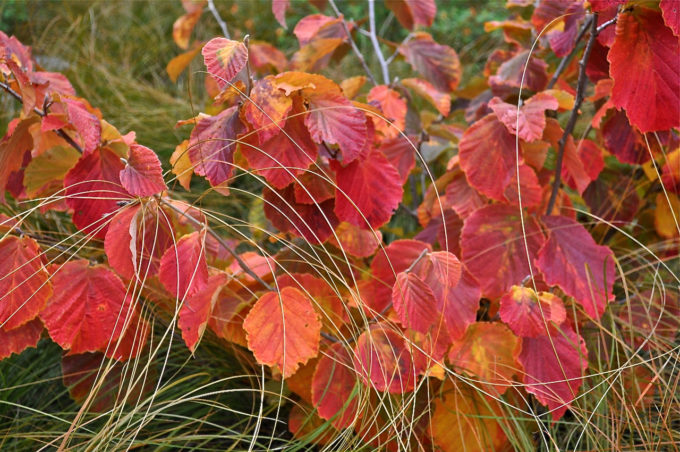
I didn’t realize how much I favor orange flowers in our own garden until I sat down to write this article. Early in the season, it starts with Papaver atlanticum (Atlantic poppy) in single and double ‘Flore Pleno’ flower form. This delightful poppy reseeds freely on our hilliside offering wave after wave of orange. The same goes for California poppy (Eschscholzia californica). Another favorite orange-hued perennial is Alstroemeria ‘Butterscotch’ gifted to to me by Lucy Hardiman (with more plants purchased at Joy Creek Nursery). Its butterscotch and apricot tones seem to complement many companion plants on our hillside. It offers continuous mellow, pastel color points well into fall.
I am a big fan of late summer and fall-blooming Agastache (misleadingly called anise-hyssop or licorice mint) in all shades of orange. Among my favorite selections are Agastache aurantiaca ‘Shades of Orange’, ‘Mandarin Dream’ (the color of Mandarin oranges), ‘Rainbow Sorbet’ (big, flared orange flowers that shift pink over several days giving a multi-color effect), and shorter compact selections like ‘Apricot Sprite’ (peachy apricot) and ‘Xera Flame’ (orange-red).
Another orange perennial that keeps trucking in our fall borders is Kniphofia thompsonii var. snowdenii. I favor spiky perennials that punctuate border designs and this poker is a showstopper. Rather than the regular congested arrangement of flowers this Kniphofia sports widely spaced multicolored tubular flowers in candy corn orange and hints of yellow. Each flower stem rises to 4’ tall; new spikes repeat through fall and continually surprise.
Flower color is obvious, but don’t overlook orange fruit. I adore Japanese persimmon (Disopyros kaki ‘Fuju’) for the beautiful shape of its deep orange fruits that persist after leaf drop into early winter. The specimen in Portland’s Lan Su Chinese Garden is to die for!
Other favorite orange-fruited shrubs are Viburnum setigerum (tea viburnum) with heavy dangling clusters of orange-red fruits (perhaps the best fruit display of any of the viburnums) and species Rosa rugosa with cherry-tomato-sized hips in arresting orange-red. R. rugosa cultivars ‘Alba’ (single white), ‘Hansa’ and ‘Therese Bugnet’ (double pinks) and ‘Blanc Double de Coubert (double white) all produce colorful hips in gardens that I have designed.
For fall foliage with plays of orange, Hamamelis x intermedia ‘Diane’ and Parrotia persica are hard to beat. Other standouts include Japanese maples, particularly selections like Acer palmatum ‘Orange Dream’ with its stunning orange new growth and yellow-orange fall color. Forever tucked in my mind is a beautiful dissected Acer palmatum ‘Waterfall’ which reliably shifts brilliant orange-red in the Japanese Hill-and-Pond Garden at Brooklyn Botanic Garden. That maple is now easily challenged by specimens in Portland’s acclaimed Japanese Garden.
Gardeners often forget that stem and bark color extend interest in the fall and winter. Euphorbia griffithii ‘Dixter’ glows with orange-red stems in our hillside borders during September and October. Cornus sanguinea ‘Winter Flame’ (and ‘Midwinter Fire’) offer brightly colored winter stems that flicker yellow, orange and red. Acer griseum (paperbark maple) is small tree standout for its exfoliating copper orange to cinnamon reddish/brown bark and showy orange to red fall color.
Since moving back to the West Coast five years ago, I have renewed my love affair with Zauschneria (now Epilobium) species and hybrids. My favorite upright forms (at least for now!) are Zauschneria ‘Bowman’ to 2 feet tall with vermillion-orange flowers and ‘Silver Select’ to 20 inches tall with silver foliage and bright orange flowers.
Remember to knit together plantings with Carex testacea (orange sedge…and don’t forget annuals and vegetables that spread an orange glow in the autumn garden. Among my favorites are Bulbine frutescens ‘Hallmark’, Calibrachoa Superbells ‘Dreamsicle’, Oxalis ‘Copper Glow’, tomato ‘Sungold’ (yum!) and a new favorite from Xera Plants, Antirrhinum ‘Double Azalea Apricot’
I let orange float into winter with a metal hanging dish planter filled with Hakonechloa macra ‘All Gold’. The grass eventually shifts to a tawny hay color as it goes winter dormant, but the dish color is an everpresent, cheerful ORANGE.